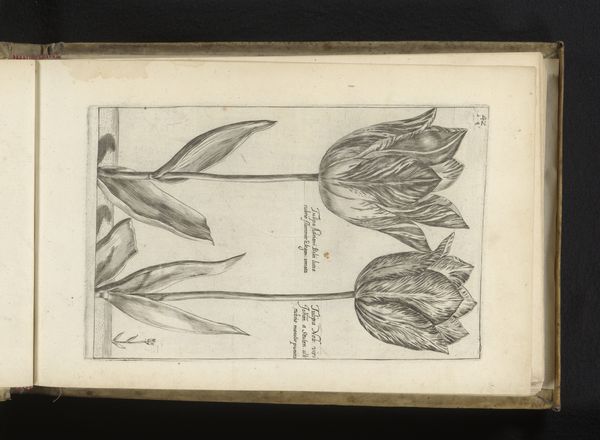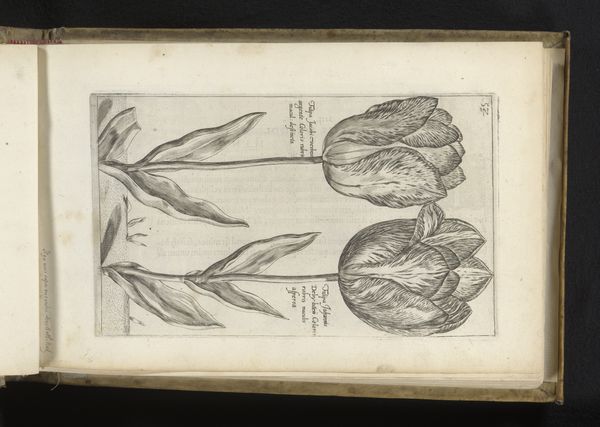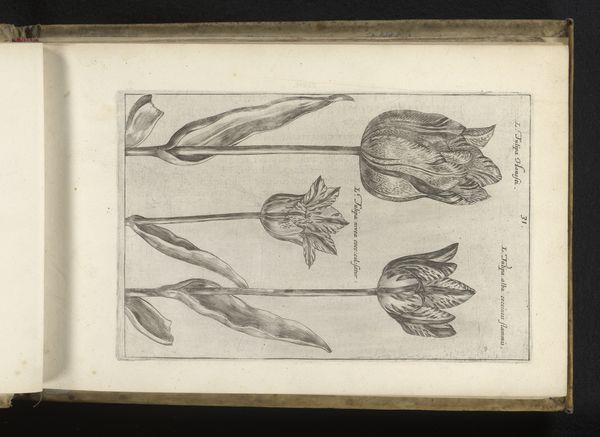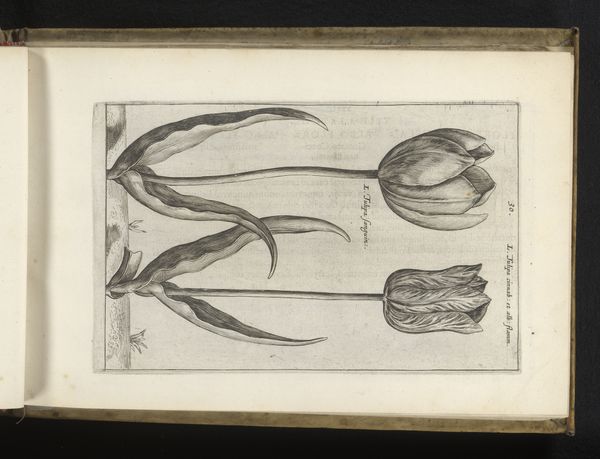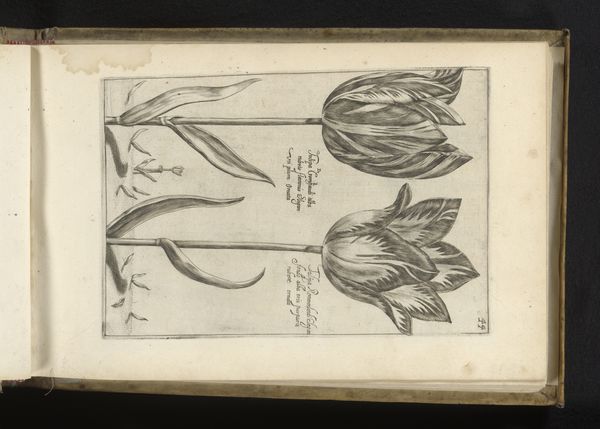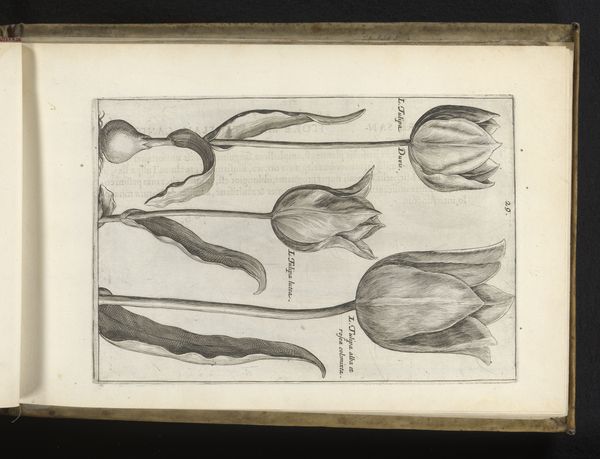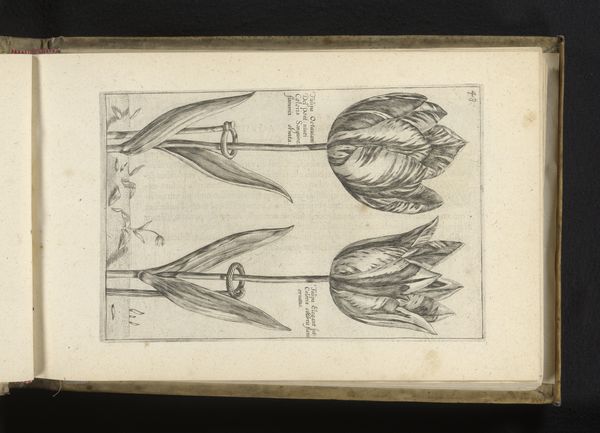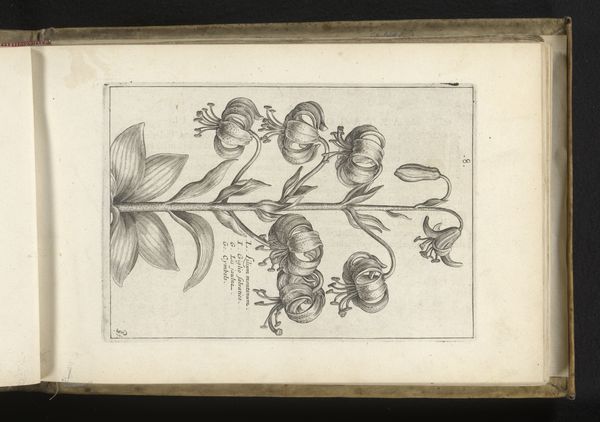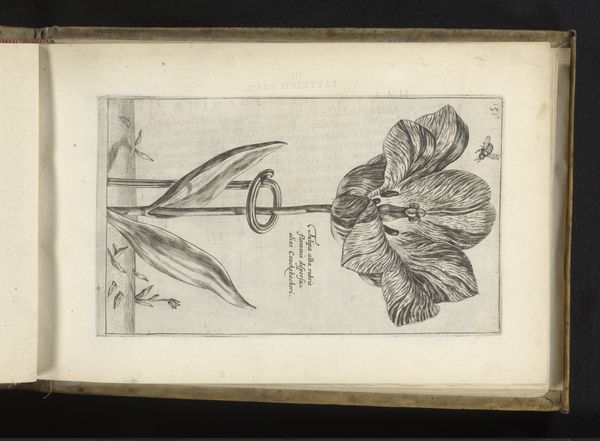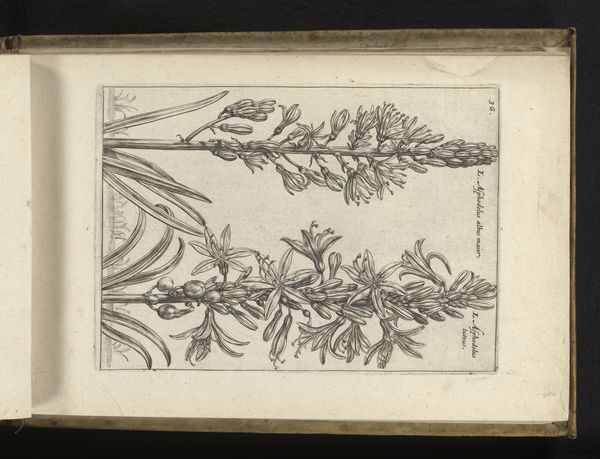
drawing, print, engraving
#
drawing
# print
#
flower
#
pen-ink sketch
#
northern-renaissance
#
engraving
Dimensions: height 219 mm, width 145 mm
Copyright: Rijks Museum: Open Domain
Editor: This is “Two Multicolored Tulip Varieties” by Crispijn van de Passe II, created around 1617. It's a drawing, or rather a print, housed in the Rijksmuseum. The detail achieved with just engraving is striking! I’m curious, what strikes you most about this image? Curator: Immediately, the commercial aspect jumps out. These weren't simply botanical illustrations, but investment tools. Consider the means of production: the meticulous labor of the engraver, replicating images for a market obsessed with these flowers. Each line is a trace of both artistic skill and market desire. Do you see how the printmaking process democratized the image? Editor: Democratized how? Weren't tulips still incredibly expensive? Curator: Precisely. The prints made the *idea* of tulip ownership accessible. The engraving itself, as a process, fueled the market. This artwork documents that craze, while being a product *of* it. Note the inscription in Latin on the right, probably the scientific denomination for classification in manuals of wealthy collectors, what does that indicate for you? Editor: That even this image itself, printed or not, was probably also pretty exclusive and marketed to the upper classes. It highlights the connection between nature, art, and commerce. Thanks, I hadn’t considered how the very act of reproducing this image was tied to the tulip mania itself. Curator: Exactly. Examining the material reality reveals a complex network of labor, capital, and desire encoded in each delicate line. What did you observe from this piece? Editor: I learned that it isn't just a beautiful illustration of tulips; it's a visual record of economic history and the way art serves economic systems, so much is materially packed into this picture.
Comments
No comments
Be the first to comment and join the conversation on the ultimate creative platform.
